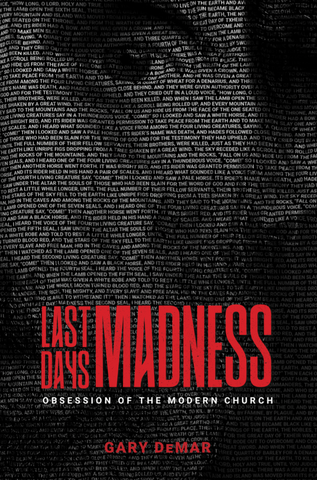Gary concludes his interview with Steve Deace about eschatology. Terms are defined, views are set forth, and questions are asked.
The man of lawlessness was the principal religious leader of Israel—the high priest who officiated over Jewish law and did not concern himself with using the law in a God-honoring way (Matt. 26:57-68). All of the lawless deeds of those priests who sent Jesus to His death and persecuted His bride, the church, had reached their climax by the time the temple was destroyed in A.D. 70 (23:32-36). In addition, the defilement of the temple was the result of their lawless acts.
The zealots had got possession of the Temple at an early stage in the siege, and profaned it by these and other like outrages; they made the Holy Place (in the very words of the historian [Josephus]) “a garrison and stronghold” of their tyrannous and lawless rule; while the better priests looked on from afar and wept tears of horror. The mysterious prediction of 2 Thess. ii.4 may point, in the first instance, to some kindred “abomination.”[1]
Josephus describes how the Zealots dismantled the biblically prescribed method of choosing priests and “ordained certain unknown and ignoble persons for that office.” Their choice for high priest was Phannias. “Yet did they hail this man, without his own consent, out of the country, as if they were acting a play upon the stage, and adorned him with a counterfeit face; they also put upon him the sacred garments, and upon every occasion instructed him what he was to do. This horrid piece of wickedness was sport and pastime with them, but occasioned the other priests, who at a distance saw their law made a jest of, to shed tears, and sorely lament the dissolution of such a sacred dignity.” William Whiston, the translator of Josephus’ Works, writes that we do not “meet with any other so much as pretended high priests after Phannias, till Jerusalem was taken and destroyed.”

Last Days Madness
In this authoritative book, Gary DeMar clears the haze of "end-times" fever, shedding light on the most difficult and studied prophetic passages in the Bible, including Daniel 7:13-14; 9:24-27; Matt. 16:27-28; 24-25; Thess. 2; 2 Peter 3:3-13, and clearly explaining a host of other controversial topics.
Buy NowGary concludes his interview with Steve Deace about eschatology. Terms are defined, views are set forth, and questions are asked. Bible prophecy and “end-time” events can be controversial, but Gary keeps his interpretation tied to Scripture without appealing to current events.
Click here for today’s episode
Click here to browse all episodes of The Gary DeMar Podcast
Click here to listen to the full interview
[1] Edward Hayes Plumptre, “The Gospel According to St. Matthew,” A New Testament Commentary for English Readers, ed. Charles John Ellicott, 3 vols. (London: Cassel and Company, 1897), 3:147.

